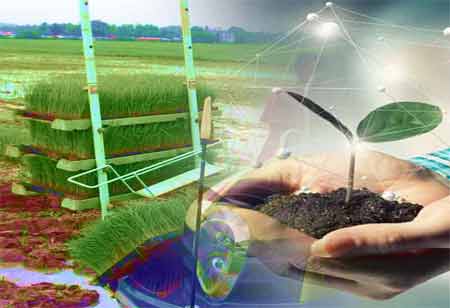Thank you for Subscribing to Agri Business Review Weekly Brief
The Impact of Indoor Farming on Food Security in APAC
The Asia-Pacific region has long grappled with the challenge of ensuring food security for its burgeoning population amid changing environmental conditions and land scarcity.

By
Agri Business Review | Friday, November 24, 2023
Stay ahead of the industry with exclusive feature stories on the top companies, expert insights and the latest news delivered straight to your inbox. Subscribe today.
Indoor farming presents a transformative solution to enhance food security in APAC, with its ability to consistently produce high-quality, nutrient-rich food while minimizing environmental impact, positioning it as a key player in ensuring a sustainable and resilient food supply for the future.
FREMONT, CA: The Asia-Pacific region has long grappled with the challenge of ensuring food security for its burgeoning population amid changing environmental conditions and land scarcity. With traditional agricultural practices facing constraints due to limited arable land, depleting natural resources, and unpredictable climate patterns, innovative solutions like indoor farming have emerged as a beacon of hope in addressing food security concerns.
Impact of Indoor Farming
Maximised Land Utilisation: One of the foremost advantages of indoor farming is its ability to maximize land use efficiency. Growing crops vertically in controlled environments significantly reduces the space required for cultivation. This is particularly beneficial in densely populated urban areas where land availability for traditional agriculture is limited.
Year-Round Production: Unlike conventional farming, which is heavily reliant on seasonal changes, indoor farming ensures a consistent and predictable yield throughout the year. By controlling factors like temperature, humidity, and light, farmers can optimise growth conditions, leading to increased productivity and reduced crop wastage.
Resource Efficiency: Indoor farming utilises advanced technologies like LED lighting, hydroponics, and efficient water recycling systems. These methods significantly reduce water usage, mitigate the need for harmful pesticides, and optimize nutrient delivery to plants. As a result, it conserves resources and minimises the environmental impact of agriculture.
Localised Food Production: Indoor farming allows for local food production, shortening supply chains and reducing the carbon footprint associated with transportation. This localized approach enhances food resilience by reducing dependency on imports and ensuring a more reliable food supply, especially during disruptions in global supply chains.
Innovation and Adaptability: The technology-driven nature of indoor farming encourages innovation and adaptation. Researchers and agricultural experts continuously explore and develop new methods and technologies to improve crop yields, optimise resource usage, and expand the range of crops suitable for indoor cultivation.
The evolution of indoor farming is propelled by technological advancements, increased R&D investment, and a growing focus on sustainable agriculture. Collaboration between governments, private sectors, and research institutions is crucial for overcoming challenges and making indoor farming economically viable. In APAC, indoor farming emerges as a transformative solution to enhance food security. Its capability to consistently produce high-quality, nutrient-rich food with minimal environmental impact positions it as a key player in ensuring a sustainable and resilient food supply for the future. Embracing innovative approaches like indoor farming is imperative in addressing evolving challenges in agriculture and securing a food-secure future for generations to come.





